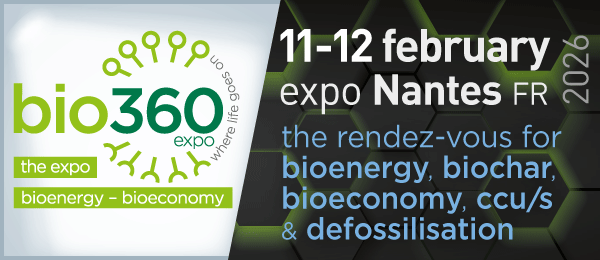The ability to produce energy efficiently and cheaply is the beating heart of economic growth and all that that imbues – wealth creation, better life quality, secure futures. Burning fossil fuels to keep the industrial wheels turning is becoming less and less viable, as stocks begin to deplete and the side effects of dirty energy production leave their mark on the environment. Headlines looks at EU-backed research projects investigating renewable alternatives – plant-derived energy sources known as biomass.
The search for new energy solutions, such as better use of biomass, is a key factor on the agenda of sustainable development.
While perhaps less is heard about biomass than other better-known renewable energy sources, such as wind turbines, solar collectors and hydropower, it already contributes some 5% of total EU energy supply, and 65% of the total renewable energy production, where it is predominately used for heat and power applications.
To increase the share of biomass used as an energy source, more and better equipment to produce both heat and power, as well as to transport fuel, is needed. More research is essential to develop such equipment and this is one area which is covered by EU funds, through its Sixth Research Framework Programme (FP6).
Scientists, working out of research centres across Europe and beyond, form consortia to carry out investigations into energy-related subjects, including biomass. Several projects have been awarded funding under FP6’s sustainable energy sub-priority of the ‘Sustainable development, global change and ecosystems’ thematic priority.
According to the EU’s ‘Energy Research’ website, “biomass means any plant-derived organic matter available on a renewable basis”. Biomass energy systems can be based on a wide range of feedstock, it continues. “They use many different conversion technologies to produce solid, liquid and gaseous fuels. These can then be used to provide heat, electricity and fuels to power vehicles; using burners, boilers, generators, internal combustion engines, turbines or fuel cells.”
For example, power can be generated by co-firing traditional fuels with a small proportion of biomass on existing power plants; burning biomass in conventional steam boilers; biomass gasification; and anaerobic digestion. The same generators producing power also yield useful steam and heat in what is called ‘combined heat and power’ (CHP). Biomass can be used in fireplaces and kilns to heat homes and, on a bigger scale, for ‘district heating’ through the power grid. And, unlike other renewable energy sources, biomass can be converted directly into liquid fuels for transport – the two most common biofuels being ethanol and biodiesel.
Biomass stoker
Many of the ways for exploiting biomass have been used for a number of years, such as stokers for combustion, while others are only just being tested and put into circulation (e.g. gasification). Emerging technologies, such as ethanol from lignocellulose, show potential for becoming future sustainable energy producing techniques, but they have not yet been fully tested.
Several of the projects already funded by FP6 explore these and other novel techniques. One three-year, €2.5 million EU funded project, called BioCellus (Biomass Fuel Cell Utility System), is studying the performance characteristics of SOFC membranes for different gas compositions and operating conditions. The 16 partners will also develop an appropriate gas-cleaning method and will demonstrate a new stack concept using heat pipes.
Meanwhile, a four-year project with €10 million in FP6 funds, called ‘Renewable biofuels for advanced powertrains’ (Renew), is researching and developing second-generation biofuels for use in modern combustion engines. A wide range of pathways will be studied for the production of road fuels from a broad range of biomass, notably lignocellulosic. Visit the ‘Biomass projects in FP6“’ section of the EU’s Energy Research website for more project examples.
As set out in the EU White Paper ‘Energy for the Future: Renewable sources of energy’ the medium- to long-term goal, to which this research effort is aimed, is to gain significant increases in the use of biomass for energy production. But before this can happen, European research must play a key role in overcoming technical hurdles and some non-technical ones, such as changing energy production – and consumption – behaviour.
Source
EU Research, Energy press release Sept. 08, 2005.
Share
Renewable Carbon News – Daily Newsletter
Subscribe to our daily email newsletter – the world's leading newsletter on renewable materials and chemicals













